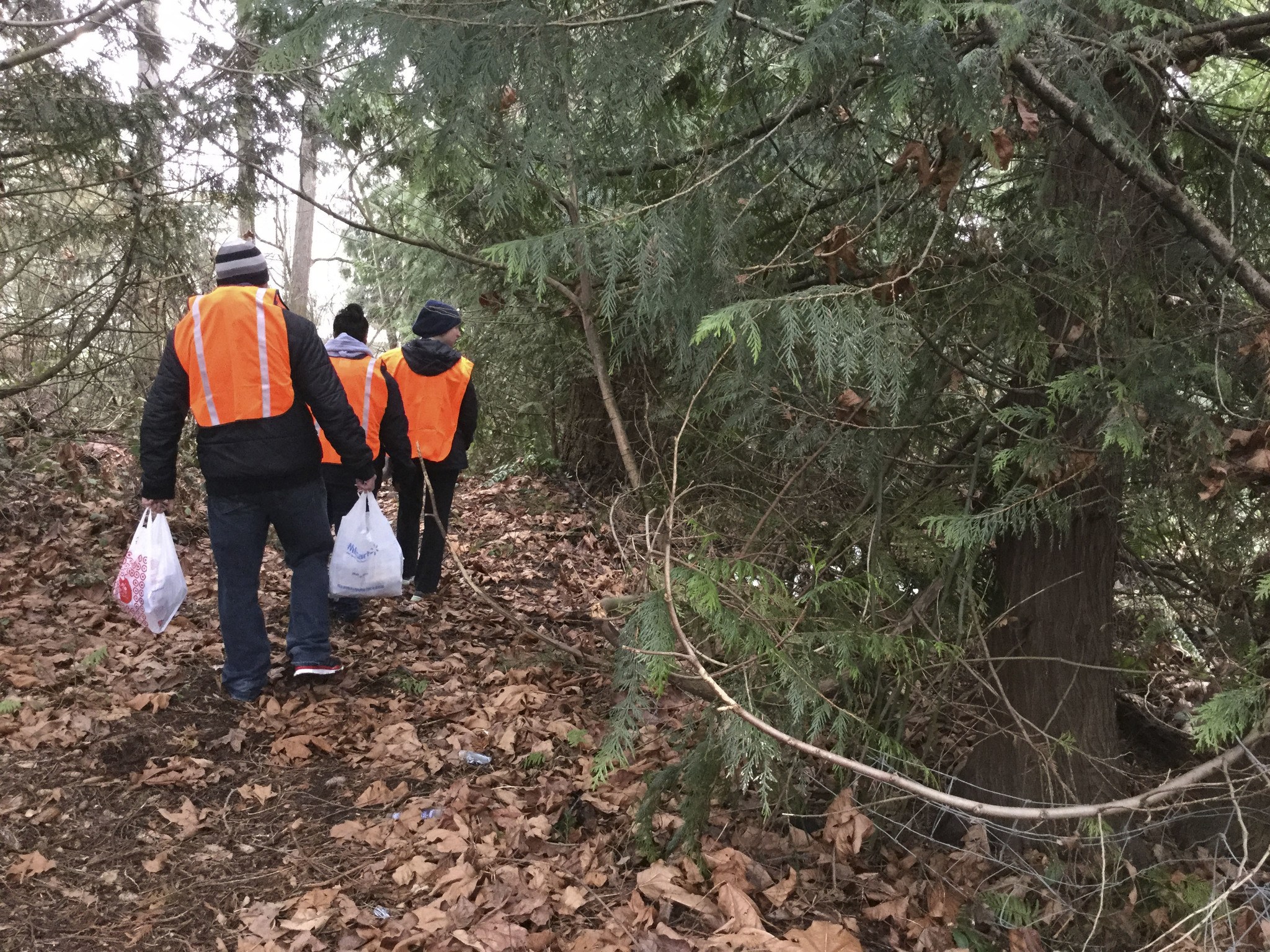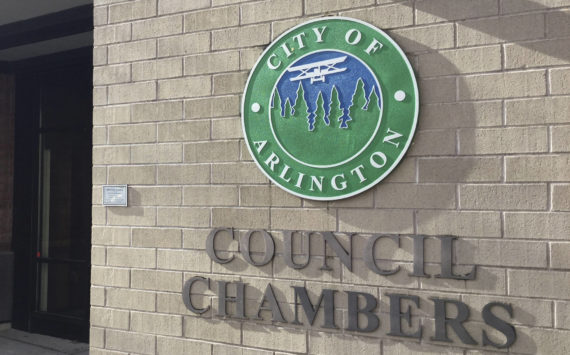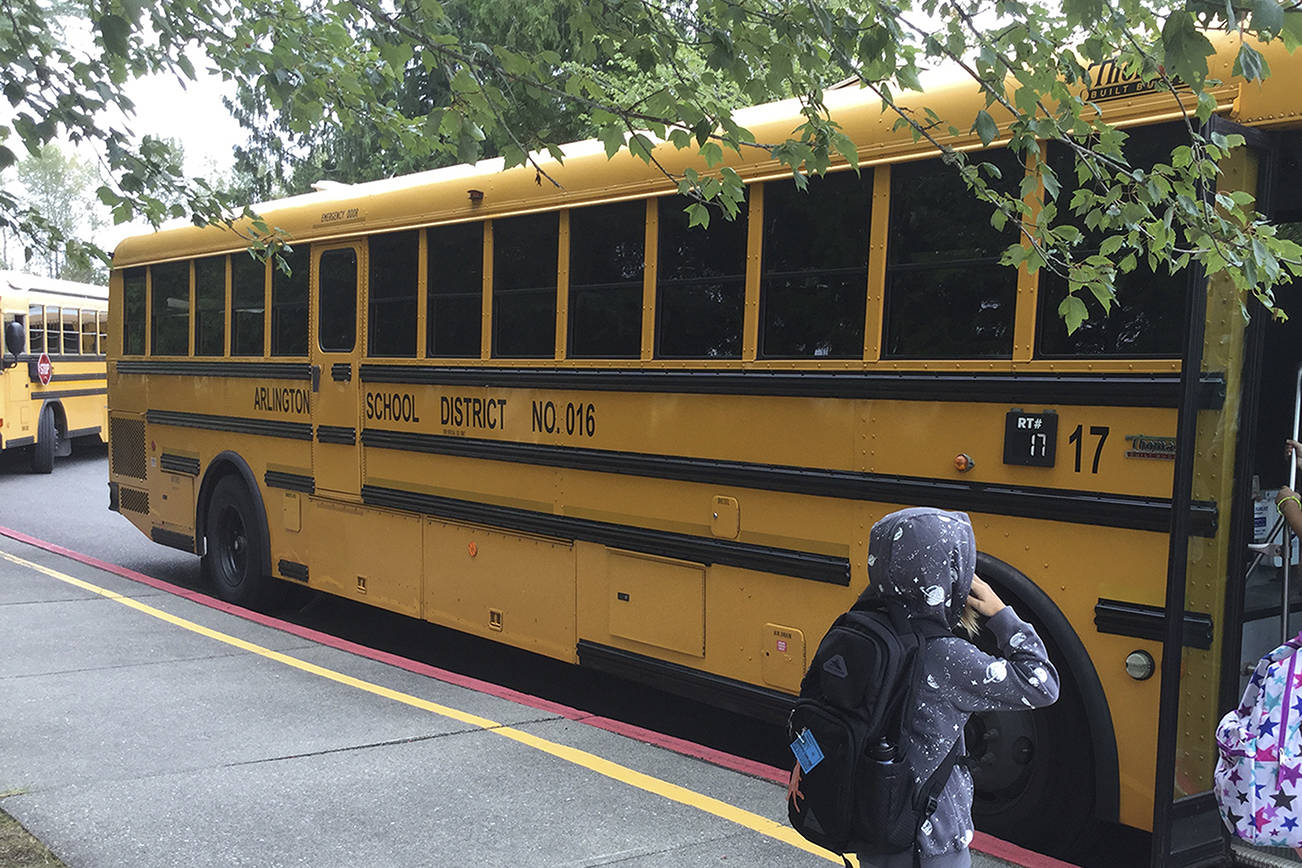ARLINGTON – While the Point In Time homeless count numbers are still being compiled from this week’s annual event, there is one family from 2016’s count that won’t be in the final tally.
As Seanna Herring-Jensen, program manager of the co-host Arlington Community Resource Center, tells it, a family of five came to the resource fair held in conjuntion with the Point In Time count, not having asked for any help before and not expecting much. They were staying on the Mountain Loop Highway just trying to survive and had been living that way for eight years. They had an eight-year-old daughter who had never slept in a real bed.
After sharing their information with homeless count volunteers, they got a meal, some clothing, access to medical and dental care, their name placed on housing lists, and other resources.
“Today, the family has a home, their daughter (and other family members) has a bed to sleep in, and she is going to school and loving it,” Herring-Jensen said. “Those are the kind of success stories we want people to hear when we talk about why the homeless count is so important to finding help for people and families.”
Alex Lark with Housing Hope, which mobilized some 100 volunteers to fan out in teams in the north county seeking to document the homeless, added that many of last year’s homeless are now in homes.
Each year, volunteers take to the streets, shelters and wooded areas where unsheltered homeless are known to camp to determine how many people are living without a permanent place to live. The numbers are reported to the federal Department of Housing and Urban Development as part of state and local grant applications.
The Stillaguamish Senior Center, a volunteer base for one of the five PIT districts in the county, also offers a resource fair. The fair, coordinated by Housing Hope, Lutheran Community Services and the Arlington Community Resource Center, includes free lunch, clothing, music, and several nonprofit agencies that can assist with services, products and resources to help the homeless.
In all, 1,118 people in nearly 878 households did not have a permanent place to stay, according to the 2016 survey. The numbers included those in emergency shelters, transitional and temporary housing, and the unsheltered. Among those, 471 reported being unsheltered. Of the 471 interviewed, 425 reported a disabling condition – 179 substance abuse, 126 mental illness and 69 co-occurring disorders.In addition, the count reported 36 veterans who are homeless, a number that is on the decline and a particular focus of attention by federal agencies.
In the final tallies reported to HUD last year, Washington state was ranked 5th in the nation with 22,000 reported homeless.
Herring-Jensen said local agencies are working hard to engage homeless, and the resource fair goes a long way toward meeting that goal. “They are part of our community,” said Herring-Jensen, who is also involved with the North County Homeless Coalition. She said the PIT count “brings in a sense of community and gives us the opportunity to interact with homeless people in a positive way.”
Lark added, “When you take the time to engage with (homeless) people, it takes the stigma away.”
Lark said the data captured on homeless families has helped Housing Hope analyze the key reasons why people wind up unsheltered.“The three key reasons are family breakup, drug and alcohol abuse, and job loss,” Lark said.
Information from the count also helps agencies like Housing Hope determine where they should direct their affordable housing resources. One nearby project is the 50-unit Twin Lakes Landing, which will be composed of pre-built modular units assembled on site, with the project aimed to serve low-income and homeless families.
About 20 military personnel from Naval Station Everett volunteered for the PIT count. A Navy team of Sarah Proffitt, Sandra Navarreti and Joe Bradley was among them. They combed the retail and wooded areas around 116th Street and Interstate 5, and east to State Avenue. The site on the south side of 116th hadbeen one of Marysville’s largest homeless encampments until the city took measure to disperse them in advance of commercial construction now under way.
Hiking through wooded areas along I-5 and ready with goodie bags, they found traces of encampments, including blankets, cans, bottles, rope, tarps and bags, but no people.
Proffitt said when she participated last year, her group met five homeless individuals in a four-hour shift.
“We feel like we’re helping a little; we want to try to help if we can,” Proffitt said. “We do want them to get to resources and see them get help.”







